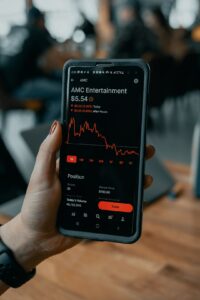Calculating Forex Pips: A Step-by-Step Guide for Traders
Forex trading, also known as foreign exchange trading, is the buying and selling of currencies on the foreign exchange market. Traders engage in this market to take advantage of the fluctuations in exchange rates and profit from the changes in currency values. In order to understand and analyze these changes, traders use various tools and techniques, one of which is the calculation of pips.
Pips, short for “percentage in point,” are the smallest unit of price movement in the forex market. They represent the fourth decimal place in currency pairs that are quoted with four decimal places, or the second decimal place in currency pairs quoted with two decimal places. Pips are important because they help traders determine the profit or loss on a trade, as well as calculate the risk-reward ratio.
To calculate pips accurately, traders need to follow a step-by-step process. Here is a comprehensive guide to help traders understand and calculate pips effectively:
Step 1: Determine the currency pair
The first step in calculating pips is to identify the currency pair being traded. For example, if a trader is trading the EUR/USD pair, they are trading the euro against the US dollar.
Step 2: Identify the pip position
The next step is to determine the position of the pip. Currency pairs are quoted differently, depending on the number of decimal places used. Most currency pairs are quoted with four decimal places, except for the Japanese yen pairs, which are quoted with two decimal places. For example, if the EUR/USD pair is quoted at 1.1234, the pip position is the fourth decimal place.
Step 3: Calculate the pip value
To calculate the pip value, traders need to know the trade size or position size. The pip value is different for each currency pair and is also influenced by the exchange rate of the quote currency to the account currency. The formula to calculate the pip value is as follows:
Pip value = (0.0001 / Exchange rate) x Trade size
For example, if a trader is trading 1 standard lot (100,000 units) of the EUR/USD pair and the exchange rate is 1.1234, the pip value would be calculated as follows:
Pip value = (0.0001 / 1.1234) x 100,000 = $8.90
This means that for every pip movement in the EUR/USD pair, the trader would gain or lose $8.90, depending on the direction of the trade.
Step 4: Calculate the profit or loss
Once the pip value is determined, traders can calculate the profit or loss on a trade. To do this, they need to know the number of pips gained or lost and multiply it by the pip value. The formula to calculate the profit or loss is as follows:
Profit or loss = Number of pips x Pip value
For example, if a trader gained 50 pips on a trade and the pip value is $8.90, the profit would be calculated as follows:
Profit = 50 x $8.90 = $445
This means that the trader would have made a profit of $445 on the trade.
Step 5: Calculate the risk-reward ratio
The risk-reward ratio is an important aspect of trading and helps traders assess the potential profitability of a trade. It is calculated by dividing the potential profit by the potential loss. For example, if a trader is willing to risk $500 on a trade and the potential profit is $1,000, the risk-reward ratio would be 1:2.
By calculating the risk-reward ratio, traders can determine if a trade is worth taking based on the potential reward compared to the potential risk.
In conclusion, calculating forex pips is an essential skill for forex traders. Pips help traders determine the profit or loss on a trade, as well as assess the risk-reward ratio. By following the step-by-step guide outlined in this article, traders can accurately calculate pips and make informed trading decisions. It is important for traders to practice these calculations regularly to enhance their trading skills and improve their profitability in the forex market.






